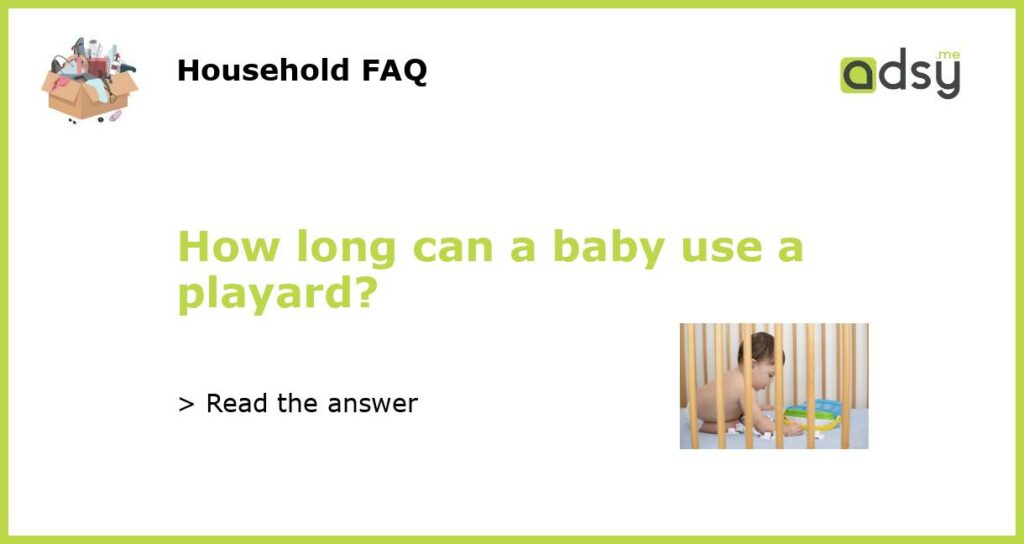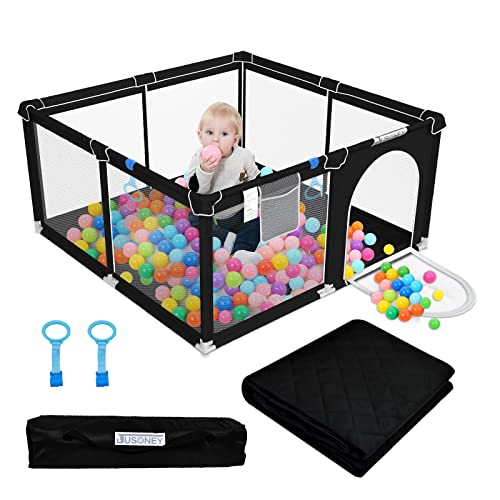Understanding the Purpose of a Playard
A playard, also known as a playpen or play yard, is a versatile piece of baby gear designed to provide a safe and enclosed space for babies and toddlers to play, nap, and rest. It typically consists of a foldable frame with mesh sides and a padded bottom, offering a secure and contained environment for infants.
The main purpose of a playard is to ensure the baby’s safety while allowing them some freedom to explore and move around within a confined area. It can be used indoors or outdoors, and its portability makes it convenient for travel or visiting places where a safe space for the baby might not be readily available.
Age Range for Playard Usage
The age range for using a playard largely depends on the individual needs and developmental milestones of the baby. Most playards are designed to be used from birth until the baby starts walking or climbing – typically around 3-4 years of age. However, it’s essential to consider a few factors when determining how long a baby can use a playard:
Weight and Height Limit: Playards are manufactured with specific weight and height limits to ensure the baby’s safety. It’s crucial to follow the manufacturer’s guidelines and not exceed these limits, as it can compromise the playard’s structural integrity.
Baby’s Developmental Stage: As babies grow and develop, they become more active and mobile. Once a baby starts pulling up to stand, crawling, or walking, they may be less content being confined in a playard. At this point, parents may choose alternative baby-proofed spaces or baby gates to provide a safe play area.
Adjusting the Playard as Your Baby Grows
Some playards offer adjustable features that can adapt to your baby’s developmental needs as they grow. These features may include multiple height settings, removable bassinets, changing tables, and even extra room to accommodate an active toddler. It’s important to read the manufacturer’s instructions to learn about the specific adjustments available for your playard.
By adjusting the playard to suit your baby’s changing requirements, you can extend its usage and ensure it remains a safe and comfortable space for your little one. However, it’s crucial to regularly check the playard for any signs of wear and tear that may affect its stability and safety.
Transitioning from a Playard to a Toddler Bed
As your baby grows older and outgrows the playard, it’s time to consider transitioning to a toddler bed. This is usually around the age of 2-3 years, depending on the child’s size and development. Toddlers are more active and require more freedom to move and explore while still staying safe during sleep.
When transitioning to a toddler bed, ensure that it meets safety standards, such as having guardrails to prevent falls. It’s also essential to create a safe and conducive sleep environment by removing any potential hazards, such as pillows, blankets, or toys, that could interfere with your toddler’s sleep.
Creating a Safe Play Environment Outside of the Playard
Even after your baby has outgrown the playard, it’s important to create a safe play environment within your home. This can be achieved by baby-proofing the living area, securing furniture, covering electrical outlets, and using safety gates to block off areas that may pose a risk.
By providing a safe and stimulating environment for your growing baby, you can encourage their development and curiosity while ensuring their safety. Always supervise your baby during playtime and be mindful of potential hazards in the surroundings to prevent accidents or injuries.






